10 Biggest Aircraft Carriers in the World
Naval Technology lists the world’s top ten biggest aircraft carriers by displacement.
Gerald R Ford class, US
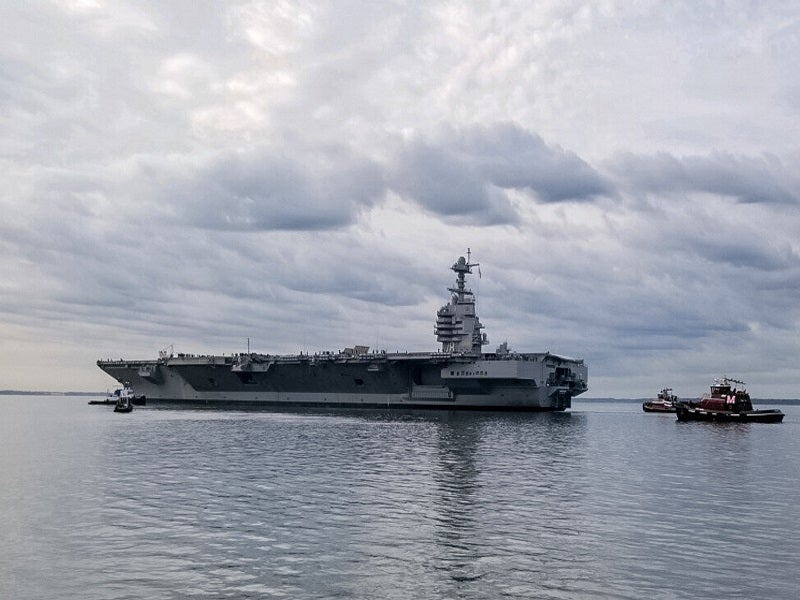
World’s 10 Biggest Aircraft Carriers
A full load displacement of 100,000t makes the Gerald R Ford class the world’s biggest aircraft carrier. The first carrier in the class, USS Gerald R Ford (CVN 78), was delivered to the US Navy in May 2017. It entered service in July 2017 and achieved initial operational capability in December 2021.
The USS Gerald R Ford completed its first planned incremental availability (PIA) in March 2022. The six-month-long PIA involved modernisation and maintenance work to equip the carrier with the latest upgrades.
The CVN 78 features a 78m-wide flight deck equipped with an electromagnetic aircraft launch system and advanced arresting gear. The carrier has the capacity to carry more than 75 aircraft and accommodate 4,539 personnel, including ship’s company, air wing and other support staff.
Gerald R Ford is powered by two A1B nuclear reactors, offering 250% more electrical capacity than the Nimitz Class. Weaponry includes RIM-162 Evolved Sea Sparrow missiles, Rolling Airframe Missiles (RAMs) and Phalanx close-in weapon system (CIWS).
Nimitz class, US
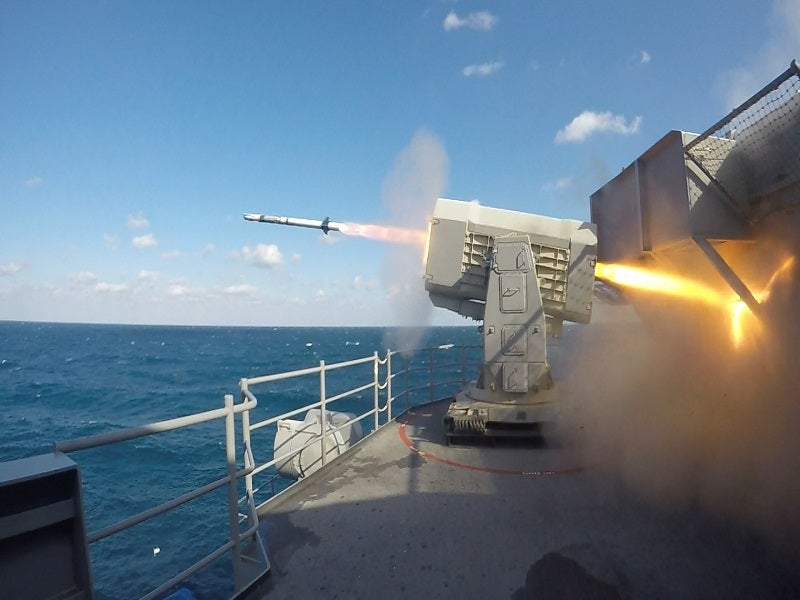
Nimitz class, with a full load displacement of 97,000t, is the world’s second-largest aircraft carrier. The first carrier in the class was deployed in May 1975, while the tenth and last ship, USS George HW Bush (CVN 77), was commissioned in January 2009. Each carrier of the Nimitz class is designed to operate for approximately 50 years, requiring just one mid-life overhaul.
Two Nimitz-class aircraft carriers, USS George Washington (CVN 73) and USS John C Stennis (CVN 74), are currently undergoing mid-life refuelling complex overhauls at the Huntington Ingalls Industries (HII) Newport News Shipbuilding yard. The overhauls are expected to allow the vessels to remain in service for another 25 years.
The 332.8m-long supercarrier features a 4.5-acre flight deck capable of carrying more than 60 aircraft. Each ship towers 20 stories above the water and can accommodate 3,000 to 3,200 ship’s company, 1,500 air wing and 500 other crew.
The Nimitz class is powered by two nuclear reactors, providing a maximum speed of more than 30k. Sea Sparrow missiles, Phalanx CIWS and RAMs mounted on board the vessel defend against potential threats. The ships in Nimitz class will be replaced by the Gerald R Ford-class (CVN 78) next-generation aircraft carriers when they reach the end of their life.
Queen Elizabeth class, UK
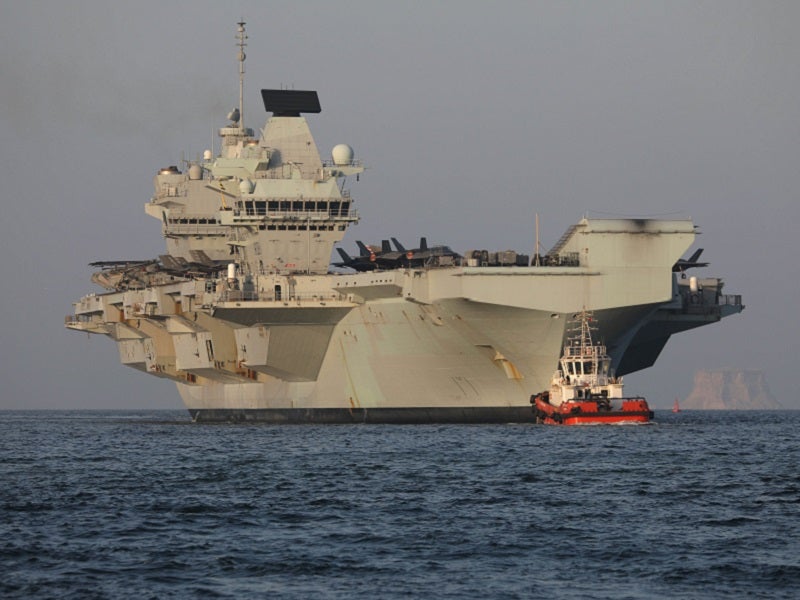
Displacing 65,000t, the Queen Elizabeth class aircraft carriers are the biggest warships ever built for the Royal Navy. The first vessel in class, HMS Queen Elizabeth, began her sea trials in June 2017 and was commissioned in December of the same year. The second carrier, HMS Prince of Wales, was commissioned in December 2019.
HMS Queen Elizabeth completed a seven-month maiden operational deployment as the leading vessel of the Carrier Strike Group 21 (CSG21) in December 2021, sailing across three oceans and five seas.
HMS Prince of Wales served as the NATO command ship throughout the Cold Response exercise held in Norway between March and April 2022.
The vessels in the Queen Elizabeth class are three times larger than the Invincible class aircraft carriers and can support the embarkation of up to 40 rotary and fixed-wing aircraft. The latest technology and automated systems on board the vessels enable operations with a streamlined crew of 679.
Each vessel in the class is armed with Phalanx CIWS, 30mm guns and mini-guns for self-defence against asymmetric threats. The aircraft carrier is powered by two Rolls-Royce MT30 gas turbines and four diesel generator sets, providing a total installed power of 109MWe. The propulsion system enables the vessel to sail at a maximum speed of 25kt.
Admiral Kuznetsov, Russian Federation
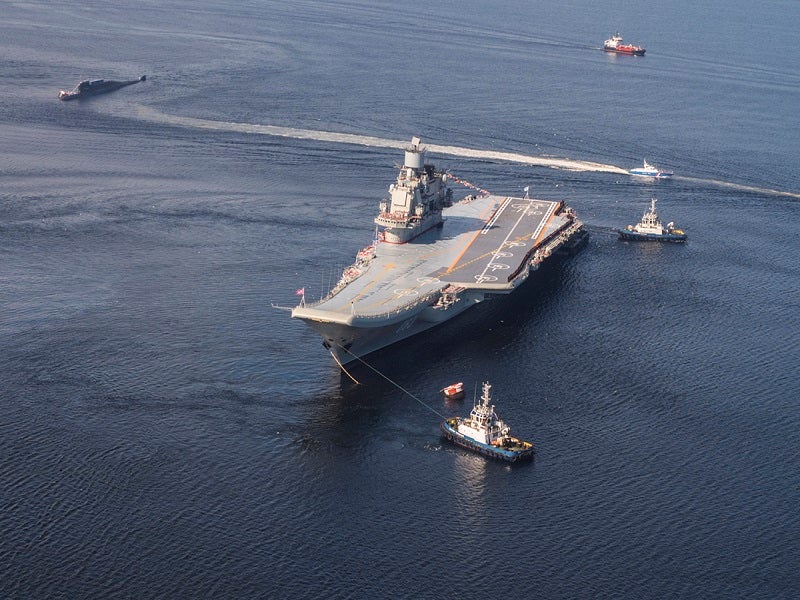
The Admiral Kuznetsov is the only operational aircraft carrier in the Russian Navy. Built by Nikolayev South shipyard, Kuznetsov ranks as the fourth largest aircraft carrier in the world. It has a full load displacement of 58,500t.
The 14,700m² flight deck of the Admiral Kuznetsov can accommodate Su-33, MiG-29K and Su-25UTG/UBP STOVL fighters, as well as Ka-27S, Ka-27LD32 and Ka-27PLO helicopters. The ship can accommodate 1,960 ship’s company, 626 air group and 40 flag staff.
The Russian aircraft carrier is propelled by a steam turbine propulsion system, providing a maximum speed of 32k. Its weaponry is composed of AK-630 AA guns, CADS-N-1 Kashtan CIWS, P-700 Granit anti-ship cruise missile and RBU-12000 UDAV-1 anti-submarine warfare (ASW) rocket launchers.
Fujian, China
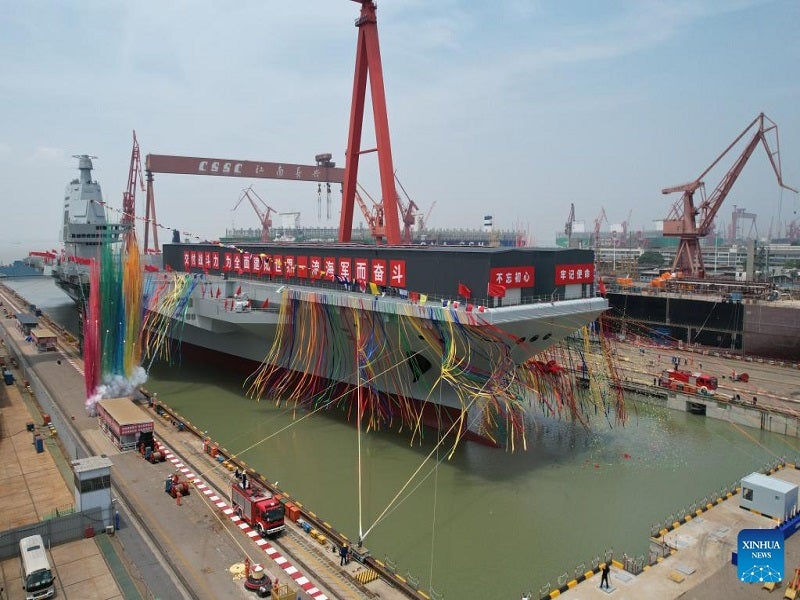
Fujian, the third aircraft carrier of China, was launched at the Jiangnan Shipyard of China Shipbuilding Industry Corporation (CSIC) in Shanghai on 17 June 2022. Named after the coastal province of Fujian, it has a full-load displacement of more than 80,000t. Fujian is expected to be China’s most advanced aircraft carrier.
It will also be China’s first aircraft carrier to use an electromagnetic catapult to launch aircraft from the deck instead of a ski ramp system, which is used by the country’s first two aircraft carriers, namely Liaoning and Shandong.
Shandong, China
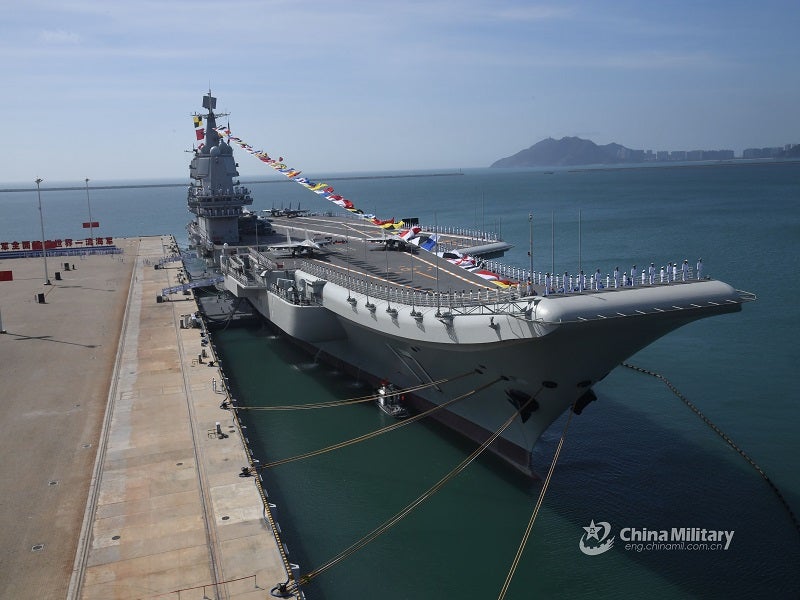
Commissioned into the People’s Liberation Army Navy (PLAN) in December 2019, Shandong is the second aircraft carrier of China as well as its first indigenous aircraft carrier. Officially designated as Type 002, Shandong can displace between 66,000t and 70,000t.
The vessel underwent sea trials in 2020 to test the on-board weapons and equipment, as well as to train crew members.
Shandong features design improvements compared to China’s Liaoning aircraft carrier, including greater aircraft carrying capacity and optimised superstructure design.
Liaoning, China
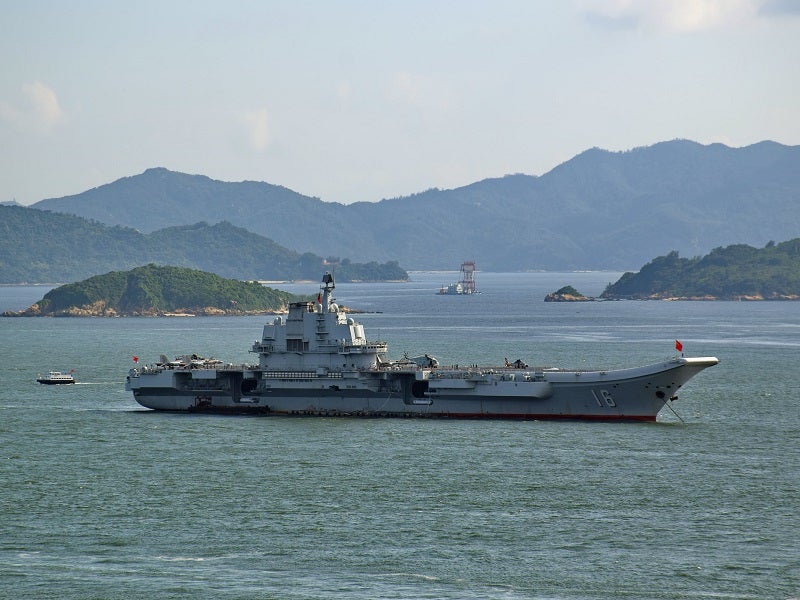
Liaoning (16) is the first of two aircraft carriers in service with the PLAN of China. Initially developed as part of the Admiral Kuznetsov class for the Soviet Union, Liaoning was earlier known by the names Riga and Varyag.
Hong Kong-based Chong Lot Travel Agency bought Liaoning at an auction in 1998 with the idea of converting it into a floating casino but never completed the conversion. The uncompleted ship was transferred to Ukraine after the dissolution of the Soviet Union. It was later acquired by China and refitted at Dalian Shipyard to serve as an aircraft carrier for the PLAN. Liaoning was finally commissioned into service in September 2012.
The aircraft carrier is armed with Type 1030 CIWS, HQ-10 missiles and ASW rocket launchers. The vessel, displacing more than 58,000t with a full load, is powered by steam turbine propulsion. Its flight deck can house approximately 50 aircraft, including fixed-wing planes and helicopters.
INS Vikramaditya, India
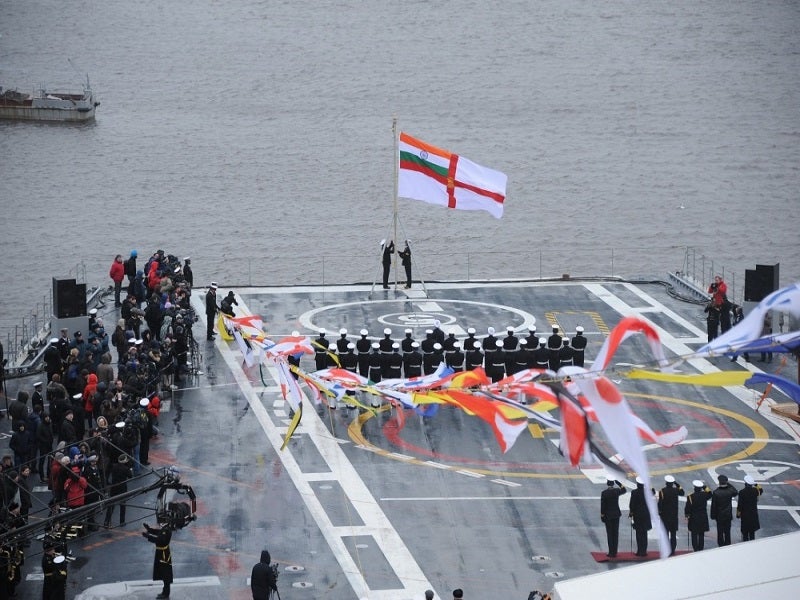
With a displacement of 44,500t, INS Vikramaditya is the biggest warship in service with the Indian Navy. Commissioned into service in November 2013, it is a modified Kiev-class aircraft carrier acquired from Russia.
The warship measures 284m long and 60m wide. The short take-off but assisted recovery (STOBAR) flight deck can carry more than 30 aircraft, including a mix of MiG 29K/Sea Harrier, Kamov 31, Kamov 28, Sea King, ALH-Dhruv and Chetak helicopters. The carrier is armed with anti-ship missiles, air-to-air missiles, guided bombs and rockets.
The propulsion system of INS Vikramaditya integrates eight turbo-pressurised boilers and four geared steam turbines, which generate a total output power of 180,000shp. The six turbo alternators and six diesel alternators on board the vessel generate a total power of 18MW.
Charles de Gaulle (R91), France
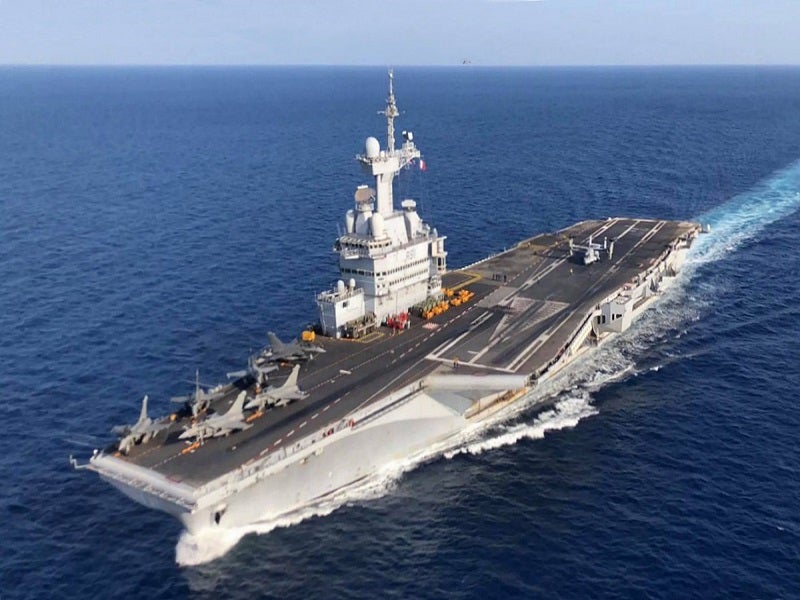
The Charles de Gaulle (R91) aircraft carrier, the first French nuclear-powered surface ship, is the only nuclear-powered carrier in service outside of the US Navy.
The French aircraft carrier underwent a six-month refit, which was concluded at Toulon naval base in July 2013. It can support the operations of 40 fixed-wing aircraft and helicopters, including Rafale M, Super Étendard, E-2C Hawkeye, SA365 Dauphin, EC725 Caracal and AS532 Cougar.
The vessel has a full load displacement of 42,000t and carries 1,350 ship’s company as well as 600 air wing. Its power plant comprises two K15 pressurised water reactors and provides a speed of 27kt.
INS Vikrant
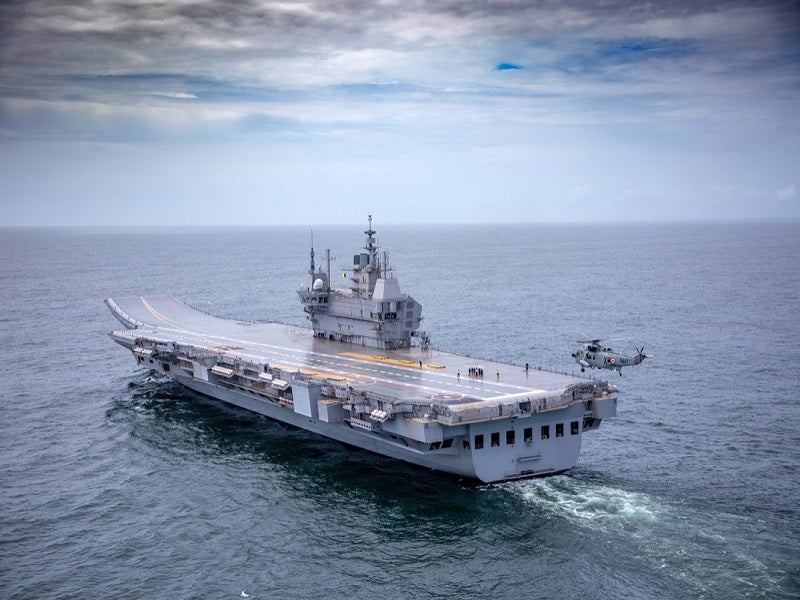
INS Vikrant, the first aircraft carrier to be built in India, has a displacement of 40,000t. It was launched in August 2013 and completed a third round of sea trials in January 2022.
The aircraft carrier’s flight deck will be able to accommodate up to 40 aircraft, including 26 Russian-made MiG-29K fighter jets.
Set to be commissioned in August 2022, the vessel employs a short take-off but arrested recovery (STOBAR) system to launch and recover aircraft from the deck. The weapons systems on board the aircraft carrier are expected to include four Otobreda 76mm dual-purpose cannons, two 32-cell vertical launching systems (VLS) for Barak 1 and Barak 8 surface-to-air missiles, and AK-630, a Russian fully-automatic naval CIWS.



